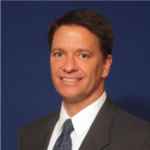In this session from our 18th Annual HJ Sims Late Winter Conference, in February 2021, thought-provoking insight from an expert panel focused on the role of technological infrastructure, and integration in the flexibility and strength of an organization – important themes for fighting the COVID-19 Pandemic and the future. In this age-qualified industry, technology presents both challenges and opportunities, a few that have been highlighted in this session include:
- Tech Use among Seniors
- Organizational Technological Infrastructure
- Integration of Technology
- Emerging Technologies
Tech Use Among Seniors
The session opened with a general overview of technology usage research conducted by Pew Research Center. Included in this research were several standout statistics. As of 2016, Pew reported that smartphone adoption among surveyed seniors (people aged 65+) had nearly quadrupled from 11% to 42%; the panel echoed that the technology-adoption trend has only continued. Pew also notes affluent and better educated seniors are more likely to report smartphone ownership. However, despite the trends towards technology use amongst seniors, the Pew research points out that technology use was significantly lower amongst seniors aged 75+ compared to their younger counterparts. Transitioning from the use of technology among prospective senior living residents, the panel moved to discussions of the role of technology within senior living organizations.
Organizational Technological Infrastructure
To frame the discussion of organizational technology adoption, Nick Patel used a “Technology Maturity Model” pyramid to represent organizations’ level of technological maturity and adoption. His analysis showed that the fundamental aspect of technology adoption is a solid foundational network and data infrastructure. He defined this as the internet and data sharing networks that allow for layering of more complex data collection and distribution. For example, without reliable and accessible internet, investment in complex resident tracking software is ineffective. For most organizations, the climb to the top of this pyramid can take three to five years.
Shaun Smith noted that the pyramid prototype is the useful to his organization. In relation to Asbury, the organization was able to head off some of the technology stress of the Pandemic to buttress Albright’s technology infrastructure. Nick echoed this sentiment. Organizations which had already begun scaling the pyramid were more prepared to pivot at the onset of the Pandemic.
However, sometimes there are still unforeseen technological challenges. When Asbury staff needed to reach its LIFE Center participants (Pennsylvania’s PACE program) at the onset of the Pandemic, they quickly realized those seniors were largely without access to broadband internet or smart technology. Pivoting, the team at Asbury canvassed door-to-door with iPads. Though it was originally a challenge, the processes they developed are now used to more quickly onboard new residents.
Integration of Technology
An important theme that emerged during the discussion was the human component of technology. AJ Peterson, as a technology solution provider, discussed how their goal is to craft platforms integrating all of the technology tools into the workflow. He highlighted the importance of obtaining feedback from the end user throughout the process of developing a tool. If tools are easier to navigate, and fit the working needs of those using them, they are more likely to be adopted widely. Shaun echoed these sentiments, saying they have found that technology must be human-oriented. Adoption and integration are easier if there is a human connection element on the front-end. Residents and caregivers increasingly adopt the technology if they have human-centered training at the start. AJ also noted the ways in which these tools will continue to shift. Particularly, he discussed the role virtual care would play as part of the larger care strategy. He positioned the question: How does the entire care team engage with residents and family members? They are anticipating growth in the remote patient monitoring space and seeing a shift that emphasizes a wellness-focused model, where risk is identified sooner and mitigated.
Emerging Technologies
The session concluded with discussion related to the emerging technologies impacting the senior space. Whereas some tools, used to reward employees, may somewhat alleviate staffing and expense concerns, other tools, like VitalTech, Trueloo, Apple Watches, and Amazon Alexa, may allow more seniors to stay at home longer. Likewise, Mynd VR, Zoom, Mirror, and other technologies allow seniors new outlets to improve mental and physical health. The panelists all shared interest in how these new technologies would impact the aging space, but they unanimously voiced the need for careful adoption of the right tools versus chasing the newest technology.
For more information, please contact Melissa Messina at [email protected].
For coverage on any of our other conference sessions, please visit our events page.
Panel of Experts

Nick Patel
President
The Asbury Group – Integrated Technologies

Shaun Smith
President & Chief Executive Officer
Albright Care Services

AJ Peterson
Vice President and General Manager
Netsmart Technologies







